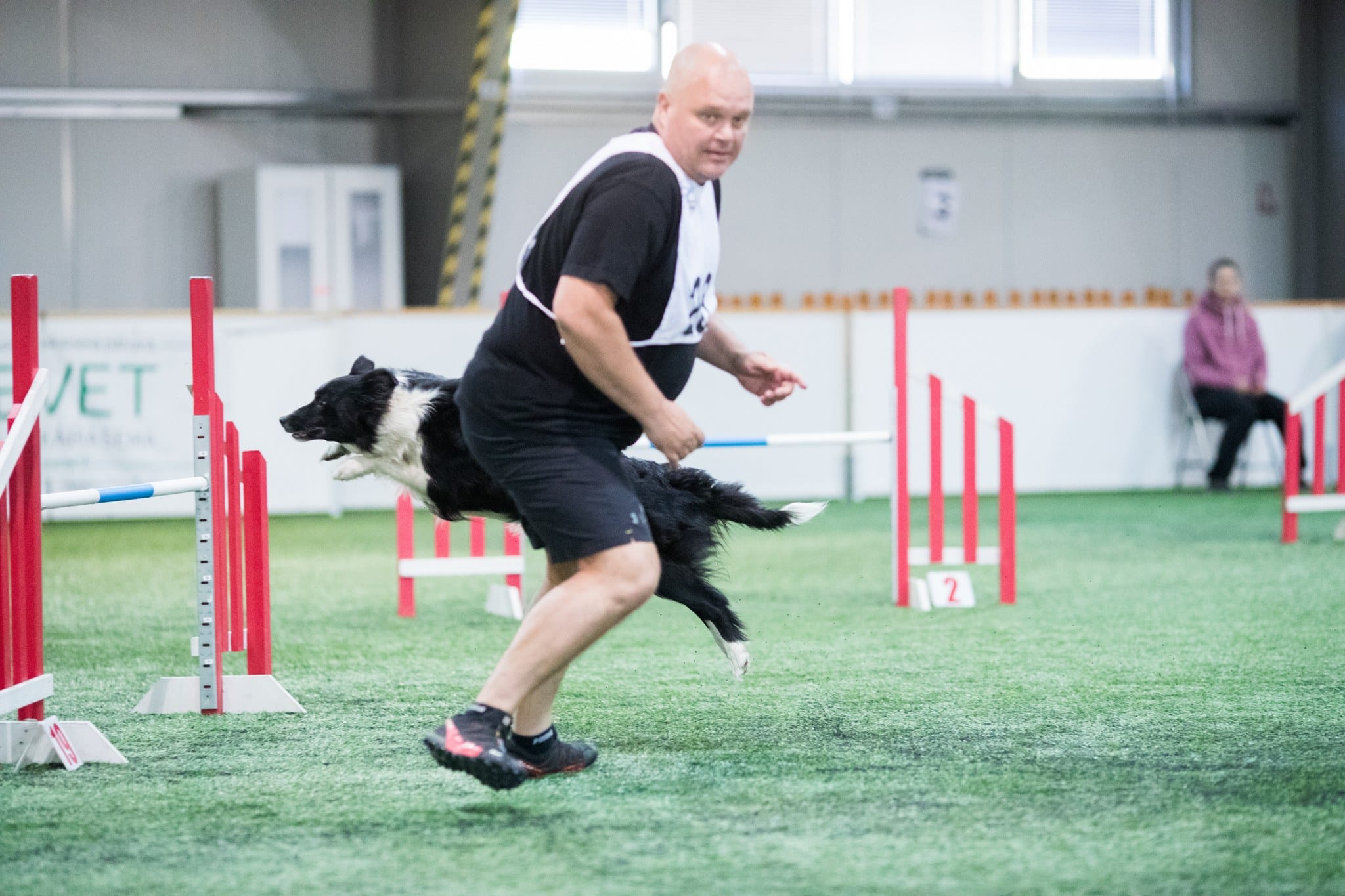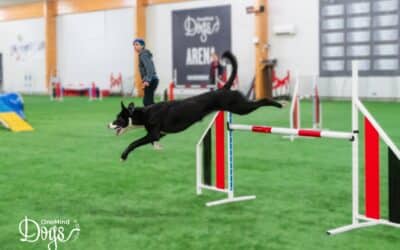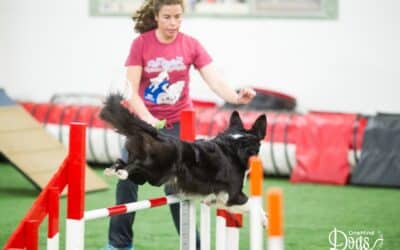When you first dive into the world of dog agility, you quickly encounter a variety of different agility handling techniques. Each one with its own unique name. These names are not just fancy labels; they encapsulate specific actions, handling elements and communication cues between handler and dog. Understanding these names and what they mean can dramatically improve your agility training and performance. While it may not seem important at first, getting to know the reasons behind the names of techniques can help you clarify your training.
The confusion around agility handling technique names
Consider the term “Ketschker,” often used broadly to describe any turn where the dog goes behind the handler. However, when we sought clarity on its meaning during seminars in Germany, we received three distinct definitions:
- A turn similar to the Jaakko Turn, but executed with the opposite arm to direct the dog over the bar.
- A technique similar to what we call a Reverse Spin.
- A technique akin to a German Turn, but again, performed with the other arm.
This illustrates a key point: without a clear, shared understanding of technique names, effective communication and training can be challenging. At OneMind Dogs we believe that, for a technique to be effective, it must include all seven handling elements working in harmony the same way every time. This ensures that the handler and dog can execute it consistently and without confusion.
The importance of naming techniques
Naming a technique does more than just give it an identity; it provides a shorthand for the complex series of actions that comprise that technique. This is crucial for several reasons:
- Clarity and Consistency: A named technique ensures that when a handler mentions, for example, a “German Turn,” both they and their students (or fellow competitors) understand exactly which actions are involved. This clarity is essential for consistent training and performance.
- Efficiency in Training: Having names for techniques allows instructors to communicate complex instructions succinctly. Without these names, each session would require re-explaining each technique in detail, which is not practical.
- Imagery Training: Named techniques allow handlers to practice individual techniques mentally without physically executing the maneuvers with their dogs. This mental rehearsal is a powerful tool for improving performance. Dogs already understand our techniques so we focus on the handler’s understanding.
The natural aspect of OneMind Dogs handling techniques
Interestingly, most of our agility handling techniques are naturally understood by dogs; it’s the handlers who need to learn and practice them. This is crucial to the intuitive design of our method, which was designed from the dog’s perspective and taps into the natural understanding between dogs and their handlers.
Understanding the techniques
Each OneMind Dogs handling technique, identified by a unique name, involves a combination of movement, position, eyes, chest laser, feet positioning, hand signals, and verbal commands. Recognizing and mastering these elements allows handlers to guide their dogs through courses consistently with precision and flow.
Learn more about the 7 handling elements:
Examples of often misunderstood techniques
Agility handlers often learn about techniques from various different sources, or simply from trying something they saw in a competition or training session. However, experimenting with different handling options can lead to confusion and frustration if the why behind the handling is not clear. Three OneMind Dogs handling techniques often mixed up include the Jaakko Turn, Reverse V-Set, and the Reverse Spin.
Jaakko Turn, Reverse Spin, and Reverse V-Set serve distinct purposes in dog agility.
- The Jaakko Turn is ideal for very tight turns, requiring a slow down cue and the handler to be close to the obstacle, cueing strong collection for the dog. This technique is useful for dogs that have a strong obstacle focus.
- The Reverse Spin is used for line adjustments or avoiding trap obstacles. It generally doesn’t need a rhythm change and the handler is positioned farther from the jump, sometimes even behind the dog. You can control the tightness of the turn achieved with a Reverse Spin in a variety of ways. Watch this webinar to learn more.
- Meanwhile, the Reverse V-Set helps dogs that struggle with wrapping jumps, especially from a parallel approach. If your dog tends to slice jumps even with a slow-down cue, this technique is for you!
Fo example, here is an image that helps to illustrate the difference between these three techniques:

Why This Matters
Having a rich vocabulary of handling techniques allows handlers to approach courses with a strategic mindset, based on the dog’s perspective. Selecting the most appropriate technique for each team, obstacle and sequence. Not only does this boost performance, it also makes training more fun and rewarding for you and your dog. Plus, it strengthens the bond and understanding between you two.
Once you understand the why behind a handling technique, it will change your overall perspective on agility. You will start to see handling from the dog’s perspective and you will have a clear picture of how your body language influences your dog. Understanding this crucial aspect of agility will make you the best possible teammate for your dog!



